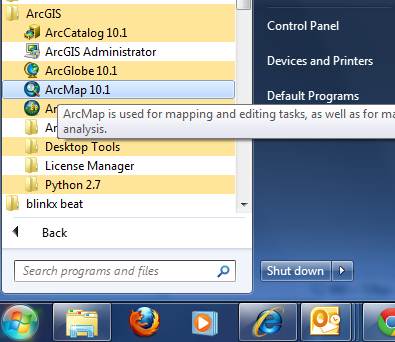

In the Properties for All Symbols select Circle1 and Size 4.To change the symbols to circles without borders, click on Properties for All Symbols The options for classifying 2009 earthquakes by depth are selected in the Properties window.A global map opens with the Continents, US States, and Lines of Longitude and Latitude on the map.Choose File > Open, navigate to c:/eyesinthesky2/week7/EarthquakeAM, select the EarthquakeAM.mxd file, and click Open.Launch ArcGIS ArcMap by double-clicking its icon on your desktop or Launch Bar.top of page Launch ArcGIS and Open the Earthquakes Project
ADDING XY DATA TO ARCMAP HOW TO
This week you will learn how to import and save these kinds of data into a native GIS format.
ADDING XY DATA TO ARCMAP SOFTWARE
GIS software can convert any table, or delimited list of information, into a GIS map if coordinate data (Longitude and Latitude) are included with it. Can you think of other patterns that are more easily understood with a map than a list or table of data? The classic example of a map illuminating the answer to a complex problem was John Snow's pump handle and cholera incidence map. When the spatial data, or Longitude/Latitude data, (also called X, Y data), are included alongside other information, it is possible to place that data onto a map and see it in a richer, more complete environment. Fortunately, many Earth and environmental science datasets available today include some sort of geospatial reference. What is absent in exclusively tabular data is the opportunity to easily inquire about spatial relationships. Thought Question: What are the advantages and disadvantages of working with data in a tabular format? The data table is similar to other attribute tables that you have been working with so far in this course. This table shows earthquakes that occurred in 2009. You may have used a spreadsheet program to analyze this data, especially if you were doing a more complex analysis.Įxamine the excerpt of a table of numbers and other information pictured below. Maybe you graphed the data or looked for patterns or clusters of data. The table was probably organized sequentially, with the first row being the earliest event and so on.Īfter the experiment was concluded you used this data table to begin the analysis of your results. As you made observations, you filled in the data table with whatever observations you made of each event. The rows of that table were set up to hold the data for each individual record or event that you planned to collect. You probably set up a data table with headers indicating the data you wanted to collect, including the units that would be collected. Think about the last time you collected a set of data.

The navigation path should be: (Path: c:/eyesinthesky2/week7/EarthquakeAM)
ADDING XY DATA TO ARCMAP ARCHIVE
Right-click on the PC to download the zipped file below.ĮarthquakeAM.zip (Zip Archive 14.6MB Mar28 10).top of page Download Geographic Data About Earthquakes With this technique in your skill "toolkit" you can easily add data from thousands of sources, or even create your own data with a GPS unit. GIS can easily draw this data as a point feature once imported into a GIS from a table of data. This week we will start to add point data from longitude and latitude documents. Whether looking at city populations, river drainage areas or invasive species counts per county, we have provided you this data. In the first few weeks of this module you have used GIS to explore many types of shapefiles. Explore other classification and symbolization optionsĬhoose Another Tabular Dataset to Add to Your Map.Classify the 2009 earthquakes by magnitude.Review How Longitude and Latitude Appear on the MapĬlassify and Symbolize the 2009 Earthquake Data Launch ArcGIS and Open the Earthquakes Project Download Geographic Data About Earthquakes


 0 kommentar(er)
0 kommentar(er)
